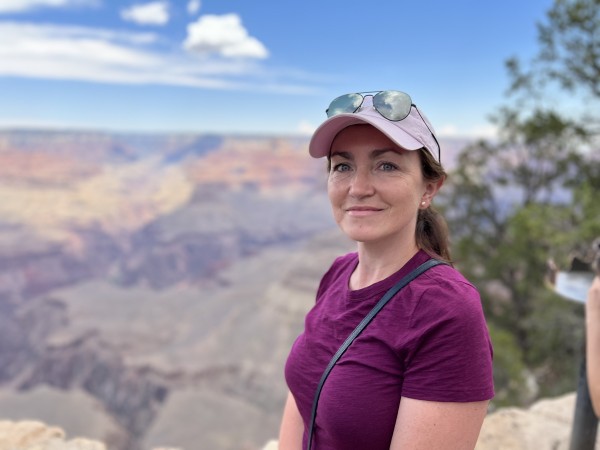Here’s The Story: We’re deep into the digital challenge. We’re trying all sorts of new things — even lots of old things done differently enough to maybe work this time around. It’s happening in country after country and region after region around the world. And that’s the story we want to tell here. Because it’s by talking about our experiences, sharing what we know, that we’ll work out — together — how the news media will meet the moment of this digital transformation.
That’s the big job we’re trying to figure out here in the IPI Global Network. We’ve spent the past few years talking to people like you who are reshaping media, or who want to better understand what’s happening in our continually changing media world. There’s been a few deep dive research reports along the way, like our recent look at what’s happening in the much challenged local media.
Almost everyone had the same questions: what’s everyone else doing? Is it working for them? What ideas can we learn and share from each other? No-one has all the answers, but everything we try, every experiment, is a building block for the future.
If we can capture and share those stories, we can all learn from each other’s successes (and *gulp* failures).
So here we are, telling the story with original content that digs into the future of journalism as it emerges into the present by sharing the stories of media startups and innovators globally.
For some of you, this will be The Story 2.0. I (that’s me, Jacqui Park) started off exploring deeply the media ecosystem around the Asia Pacific – from Indonesia’s Katadata to Japan’s NewsPicks. All of you can find the full archive of back issues here and the deep dive stories here.
Now, we’re back after a break and with a new force, now part of the IPI Global Network of editors and journalists with a global focus, to tell the stories in all corners of the world: in Africa, the Middle East, Central and Eastern Europe and Latin America as well as Asia and the Pacific, without losing sight of the exciting experiments in western Europe and North America.
We want to tell that story at scale to everyone who wants it. So if you’re receiving this email it’s because you were part of the audience of the earlier incarnation of The Story newsletter or you’ve signed up to receive news and information on IPI’s media innovation work. Or maybe both! I’m now leading the IPI work on network strategy and innovation with a great team who you’ll meet through this email: Ryan Powell, Teona Sekhniashvili and Grace Linczer.
We start with a look at an exciting innovation out of Africa, The Continent. We “visited” their distributed newsroom last month as part of IPI’s virtual newsroom program. That is, we gathered a group from the network and jumped on a Zoom to meet the start-up’s founding team while they talked us through their vision and journey.
They’re meeting their pan-African audience where there are – on messaging apps: mainly WhatsApp, but also Signal and Telegram.
It was our second virtual visit to a newsroom in the IPI network. The first was to the equally amazing The News Minute in southern India. Read about them in The Story here.
If you want to join future visits, sign up to the IPI innovation network. This also gives access to our innovation Slack channel and regular information and opportunities to be part of the exciting work we’re doing on innovation in the IPI network.
Now, let’s dive into The Continent. The full story is online here.
The Continent uses WhatsApp to tell Africa what’s up

The innovative concept of a continent-wide voice came out of those dark days of the early Covid season. The founding team could see the challenge of misinformation spreading on Meta’s messaging platform among family and friends. “We thought: ‘Wow! If fake news can proliferate on WhatsApp, what’s stopping real news from doing the same?’” editor-in-chief Simon Allison told a recent virtual newsroom visit by the IPI Global Network.
The team saw, too, how Zimbabwe’s Nigel Mugamu was pioneering the WhatsApp newspaper with 263Chat (“absolutely brilliant” says Allison). You can read an earlier article on 263Chat here.
Then, the final piece fell into place: a PDF of the entire edition of one of South Africa’s most prestigious newspapers, The Sunday Times, was leaked online in March 2020, going viral on WhatsApp.
It all helped the team recognize what they already knew. Allison says: “WhatsApp is probably the single most powerful social media network that has ever been invented. I believe it’s more powerful than Facebook or Twitter because it is designed as a platform to communicate with friends and family.”
Communities editor Kiri Rupiah points out that WhatsApp is the primary means of communication for a lot of people in the global south.
She says: “Journalists have been doing a pivot to video, pivot to audio, paywalls, gamifying, all sorts of things. But they’ve not really focused on going to where their readers are. We thought: ‘This is the biggest platform for people to receive the news and for people to talk to people that they trust. Why not go there and work from there?’”
Editorial director Sipho Kings says they now have four full-time and five part-time staff working across Africa. They work hard to sustain diversity, with at least 50-50 gender breakdown and actively searching for new, African, writers.
In late 2021, they rolled out a readers’ donations trial. Kings says: “It was a confirmation that we don’t want to pursue reader revenue, at least in the short to medium term. It is so much work to get money from people, either through subscriptions or through support, whichever model you go with. And it also fundamentally changes your relationship with the audience.”
Want more? Here’s our full story on The Continent.
Now we’re accelerating the transition
Here’s a bit of news we’re too excited about to hold on to: This week, we’re announcing the publishers that are part of the first round of our Transition Accelerator in the Media Innovation program of the IPI Global Network. Through co-funding from the European Union, we’ll be working with 15 of the smartest media outlets to design and deliver audience-first products, features and revenue streams. The program includes grant funding, training, coaching and networking over six months, starting in January 2023.
It’s a fascinating group of newsrooms, planning to build everything from content verticals focusing on climate change and womanhood, to local newsrooms deeping their engagement with users through business models focused on community building.
Look out for our next issue of The Story next month: we’ll be featuring a deep look at the group and what they can tell us about where media innovation is right now.
In the meantime, we can’t wait to get started!



